Art & History: Budapest Unveiled
Join us on a captivating journey through Budapest's rich history and vibrant street art scene on this free walking tour that celebrates museums and urban creativity.
Time
3 Hours
Stops
9 Places
Distance
5.8 km
Hungarian National Museum
Begin your cultural exploration at the Hungarian National Museum, which provides a comprehensive overview of Hungary's history and artistic heritage.
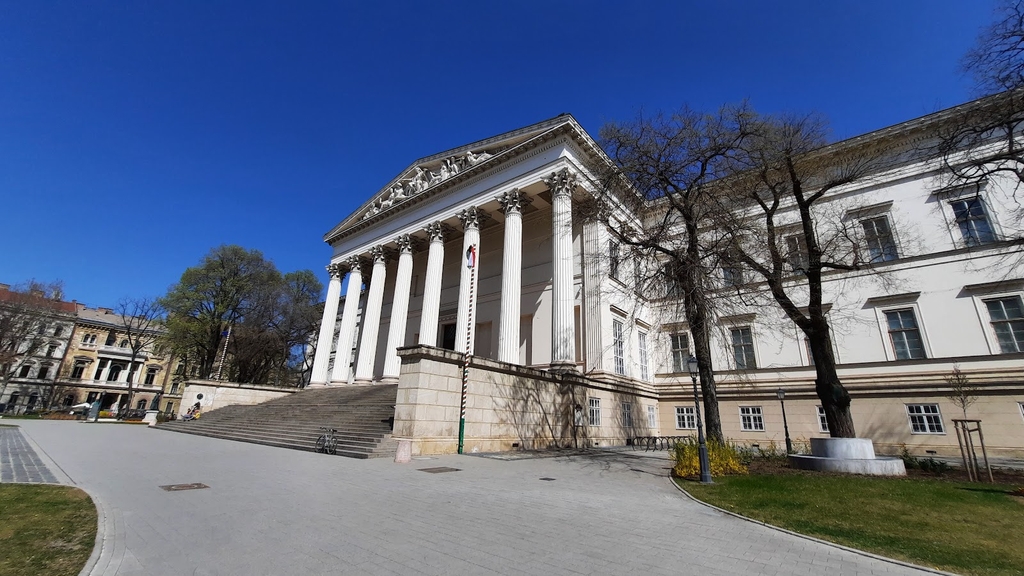
Hungarian National Museum (Source: Google Maps)
The Hungarian National Museum, founded in 1802, is a cornerstone of Hungarian cultural heritage. It houses a vast collection of artifacts that narrate the country’s history from prehistoric times to the modern era. The museum's neoclassical architecture stands as a testament to its significance, featuring grand columns and a stunning facade. Inside, visitors can explore exhibitions that delve into Hungary's archaeological, historical, and artistic narratives, making it a must-visit for anyone interested in the nation's past. The museum also plays a vital role in education and cultural preservation, hosting various events and programs that engage the public in Hungary's rich traditions.
Astoria Underground Station Street Art
Discover vibrant street art near the Astoria Underground Station, showcasing the creativity and urban culture of Budapest.
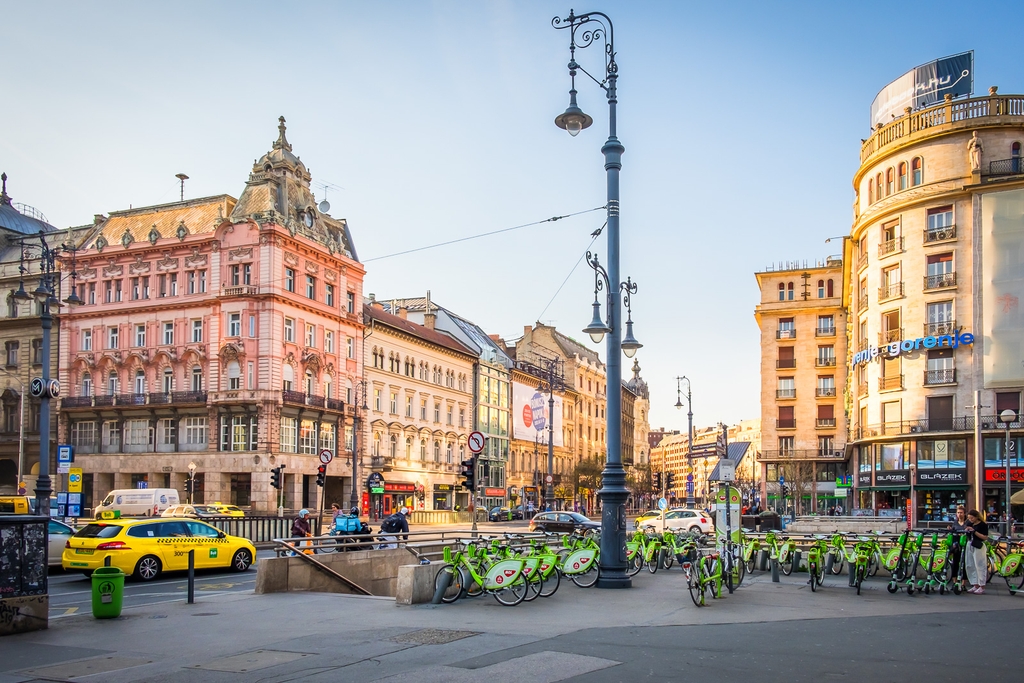
Astoria Underground Station Street Art (Source: Google Maps)
The area surrounding Astoria Underground Station is a vibrant canvas of street art that reflects Budapest's dynamic urban culture. This location is a hotspot for local and international artists who use the walls as their medium to express social commentary, political messages, and pure artistic flair. The street art here is ever-evolving, with new pieces regularly appearing, showcasing a blend of styles from graffiti to intricate murals. This artistic expression contributes to the cultural landscape of Budapest, making it an essential stop for art enthusiasts and those looking to experience the city's contemporary creativity. The juxtaposition of historic architecture and modern street art creates a unique atmosphere, inviting exploration and appreciation.
Szimpla Kert
Experience Budapest's vibrant street art scene and alternative culture at Szimpla Kert, a famous ruin bar adorned with eclectic art and installations.
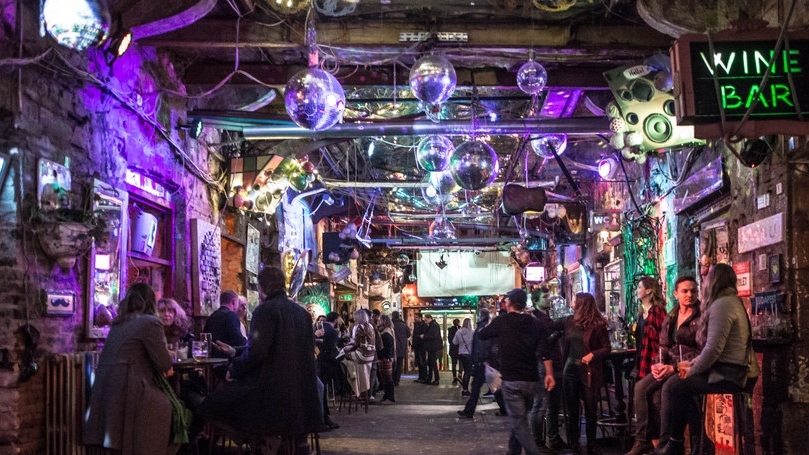
Szimpla Kert (Source: Google Maps)
Szimpla Kert, one of Budapest's most iconic ruin bars, is a vibrant hub of street art and alternative culture. Established in 2002, this eclectic venue is housed in a dilapidated building that has been transformed into a lively bar and cultural space. The interior is a maze of quirky decorations, including vintage furniture, art installations, and murals created by local artists. Szimpla Kert hosts a variety of events, from live music and film screenings to farmers' markets, fostering a sense of community and creativity. It serves as a gathering place for locals and tourists alike, embodying the spirit of Budapest’s nightlife and artistic expression. The bar's unique ambiance and commitment to supporting local art make it a must-visit for those looking to immerse themselves in the city's vibrant culture.
Hungarian Jewish Museum and Archives
Explore the rich history and culture of Hungarian Jewry at the adjacent Hungarian Jewish Museum and Archives.
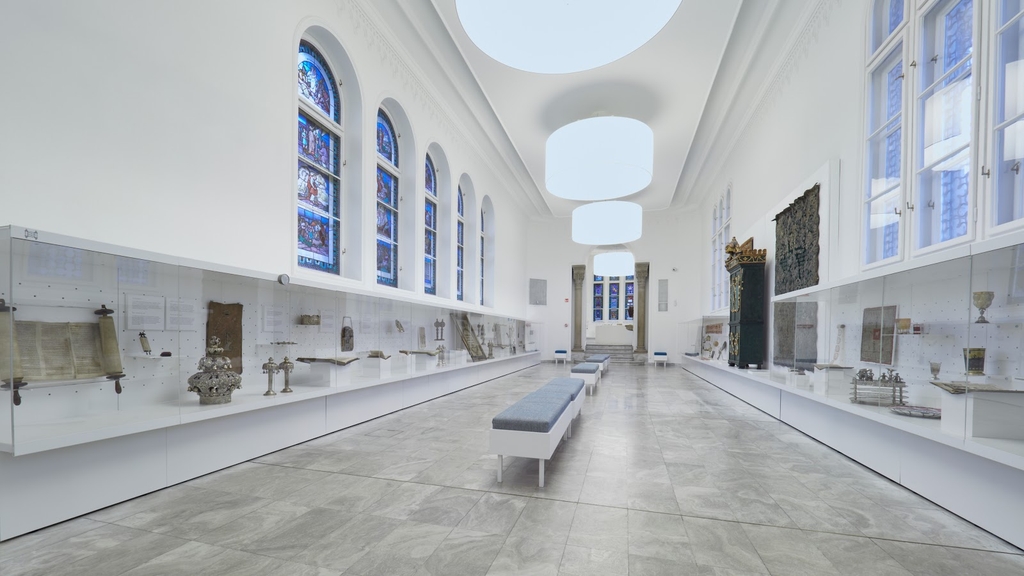
Hungarian Jewish Museum and Archives (Source: Google Maps)
The Hungarian Jewish Museum and Archives, located adjacent to the Dohány Street Synagogue, offers an in-depth exploration of the history and culture of Hungarian Jewry. Established in 1996, the museum features a rich collection of artifacts, photographs, and documents that illuminate the contributions of Jewish communities to Hungary's cultural and social fabric. The museum's exhibitions cover various aspects of Jewish life, including religious practices, traditions, and the impact of historical events such as the Holocaust. Its mission is to preserve and promote the heritage of Hungarian Jews, making it an important site for education and remembrance. Visitors can engage with the poignant stories and experiences of the Jewish community, fostering a deeper understanding of their significant role in Hungary's history.
Dohány Street Synagogue
Visit the Dohány Street Synagogue, the largest synagogue in Europe, renowned for its stunning architecture and historical significance.
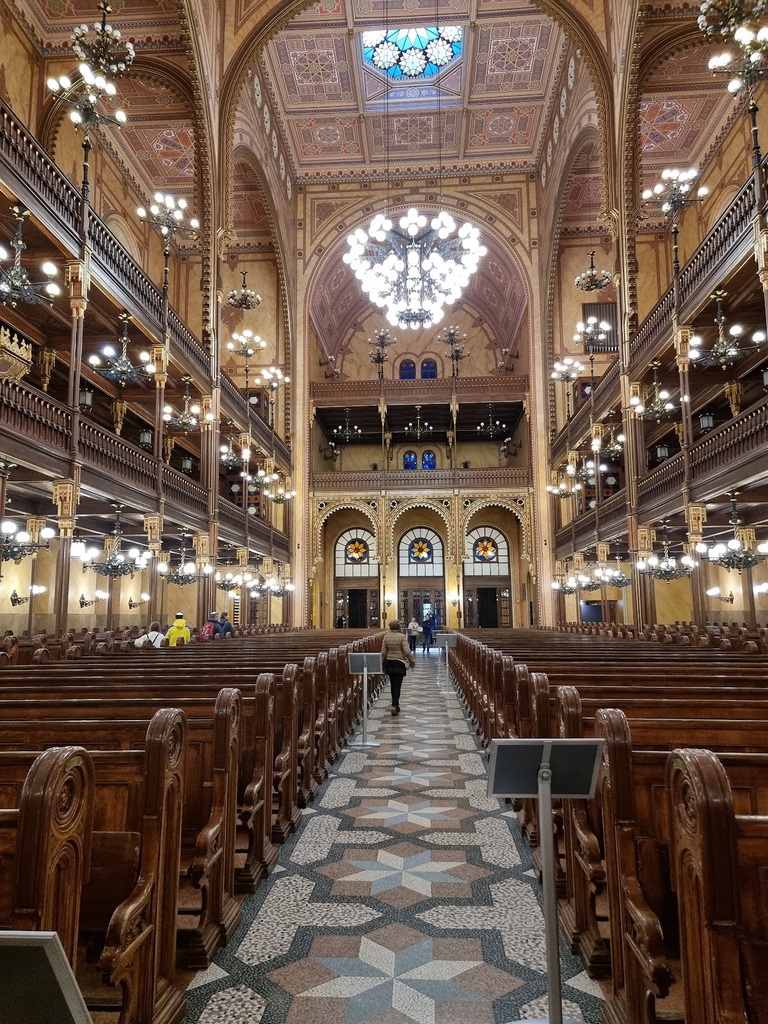
Dohány Street Synagogue (Source: Google Maps)
The Dohány Street Synagogue, the largest synagogue in Europe, is a remarkable architectural masterpiece located in the heart of Budapest. Designed by architect Ludwig Förster, it was completed in 1859 and showcases a stunning blend of Moorish Revival and Romantic architectural styles. The synagogue can accommodate over 3,000 worshippers and features intricate interior designs, including beautiful stained glass windows and ornate decorations. It also houses the Hungarian Jewish Museum, a memorial to Holocaust victims, and a cemetery, making it a significant site for both religious and historical reflection. The synagogue serves as a symbol of the resilience and cultural heritage of the Jewish community in Hungary, attracting visitors from around the world who come to appreciate its beauty and learn about its profound history.
Great Market Hall
Visit the Great Market Hall, not only a historic market but also a place where you can admire local produce and traditional Hungarian goods.
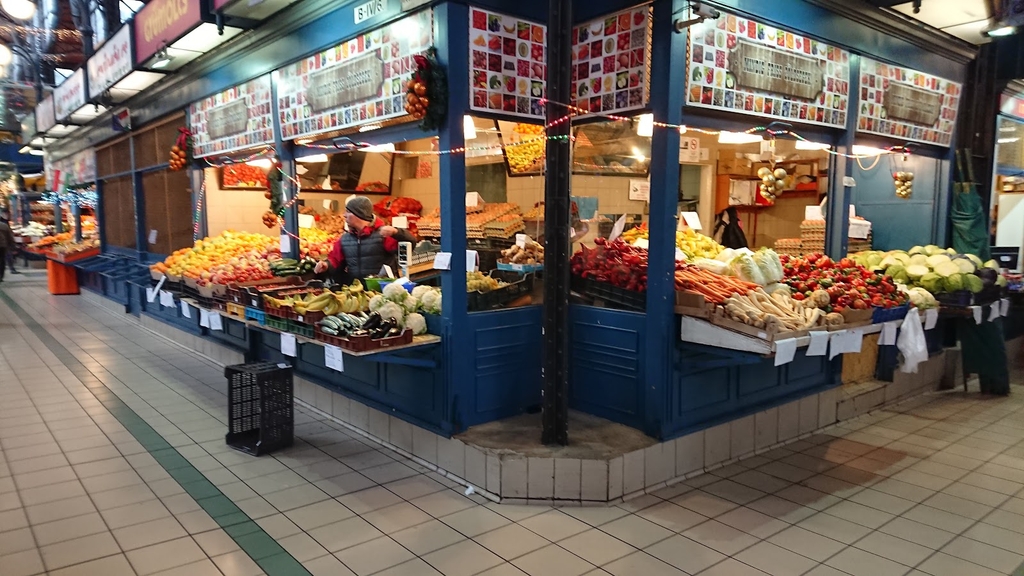
Great Market Hall (Source: Google Maps)
The Great Market Hall, or Nagyvásárcsarnok, is Budapest's largest and oldest indoor market, opened in 1897. This architectural gem, designed by architect Samu Pecz, combines Gothic and Renaissance styles, featuring a stunning tiled roof and a grand entrance. Inside, the market bustles with vendors selling fresh produce, meats, dairy products, and traditional Hungarian delicacies, making it a vibrant hub of local culture. Visitors can explore the various stalls offering artisanal goods, souvenirs, and culinary delights, providing a taste of Hungary's rich gastronomy. The Great Market Hall serves not only as a shopping destination but also as a social space where locals gather, reflecting the community's lifestyle and traditions. Its historical significance and lively atmosphere make it a must-visit for anyone looking to experience the authentic flavors of Budapest.
Váci Street
Stroll along Váci Street, a bustling pedestrian thoroughfare known for its vibrant atmosphere, street performers, and charming architecture.
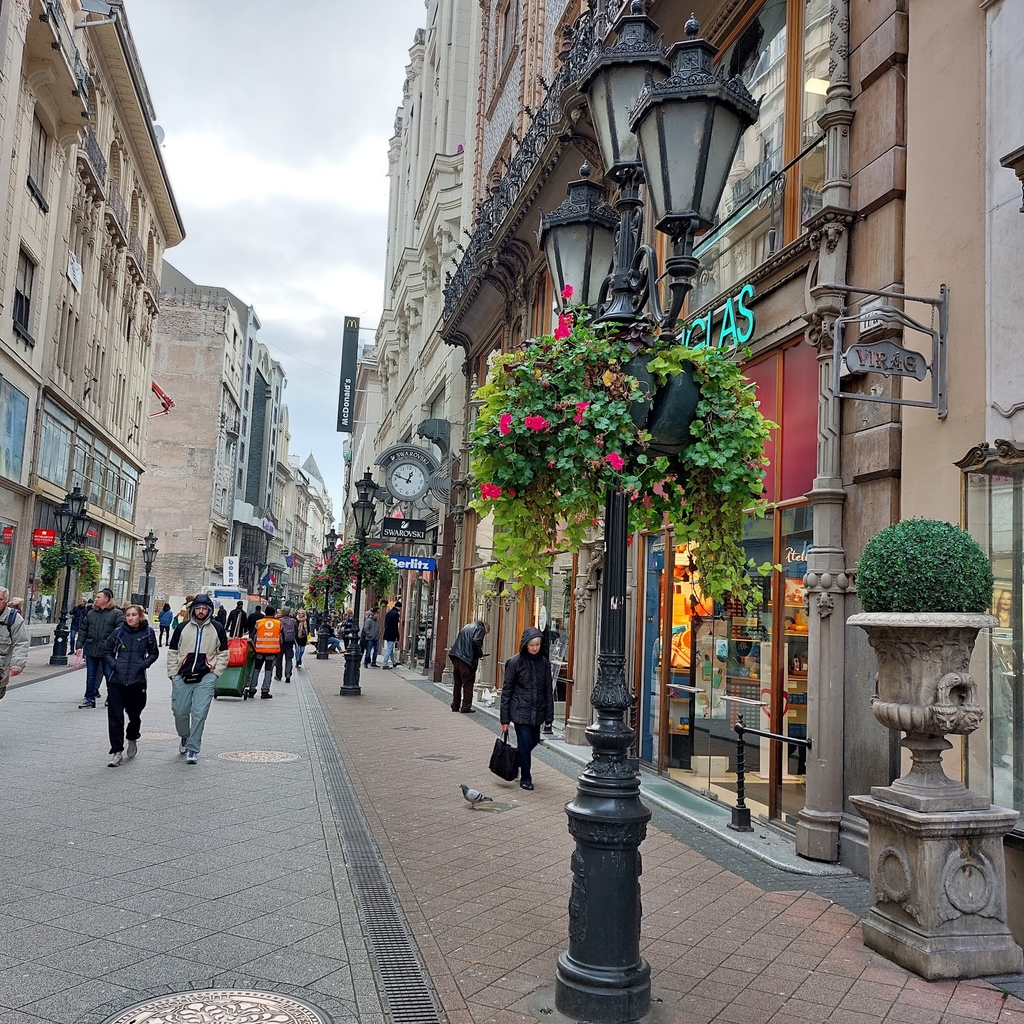
Váci Street (Source: Google Maps)
Váci Street is one of Budapest's most famous pedestrian thoroughfares, known for its vibrant atmosphere and charming architecture. Stretching from Vörösmarty Square to the Great Market Hall, this bustling street is lined with shops, cafes, and restaurants, making it a popular destination for both tourists and locals. The street's history dates back to the medieval period, and it has evolved into a lively commercial hub over the years. Visitors can enjoy street performances, art displays, and a variety of culinary offerings as they stroll along the picturesque pathway. Váci Street captures the essence of Budapest's urban life, blending historical significance with modern vibrancy, making it an ideal spot for a leisurely walk and cultural exploration.
Hungarian National Gallery
Immerse yourself in Hungarian art at the Hungarian National Gallery, housed in the stunning Buda Castle.
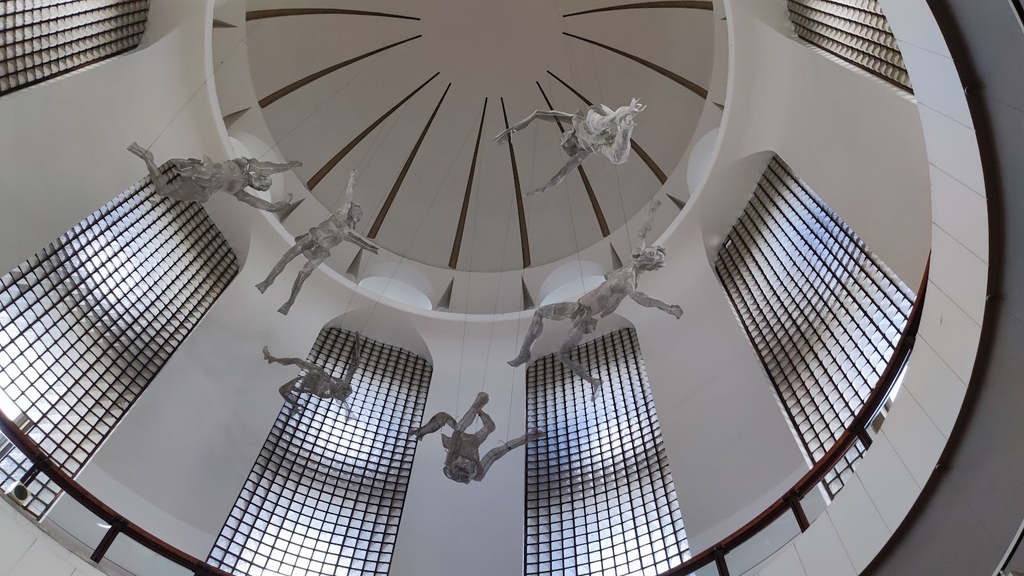
Hungarian National Gallery (Source: Google Maps)
The Hungarian National Gallery, located within the stunning Buda Castle, is a premier institution dedicated to Hungarian art. Established in 1957, the gallery houses an extensive collection of artworks spanning from the Middle Ages to contemporary pieces. The museum's architecture complements the historical significance of the castle, offering visitors a majestic backdrop to explore. Inside, guests can admire works by renowned Hungarian artists, including paintings, sculptures, and applied arts. The gallery also hosts temporary exhibitions, educational programs, and cultural events, fostering a deeper appreciation for Hungary's artistic heritage. As a vital part of Budapest's cultural landscape, the Hungarian National Gallery invites art lovers to engage with the rich visual history of the nation.
Fisherman's Bastion
Conclude your tour with panoramic views of Budapest from the Fisherman's Bastion, an iconic neo-Gothic terrace offering breathtaking vistas of the city.
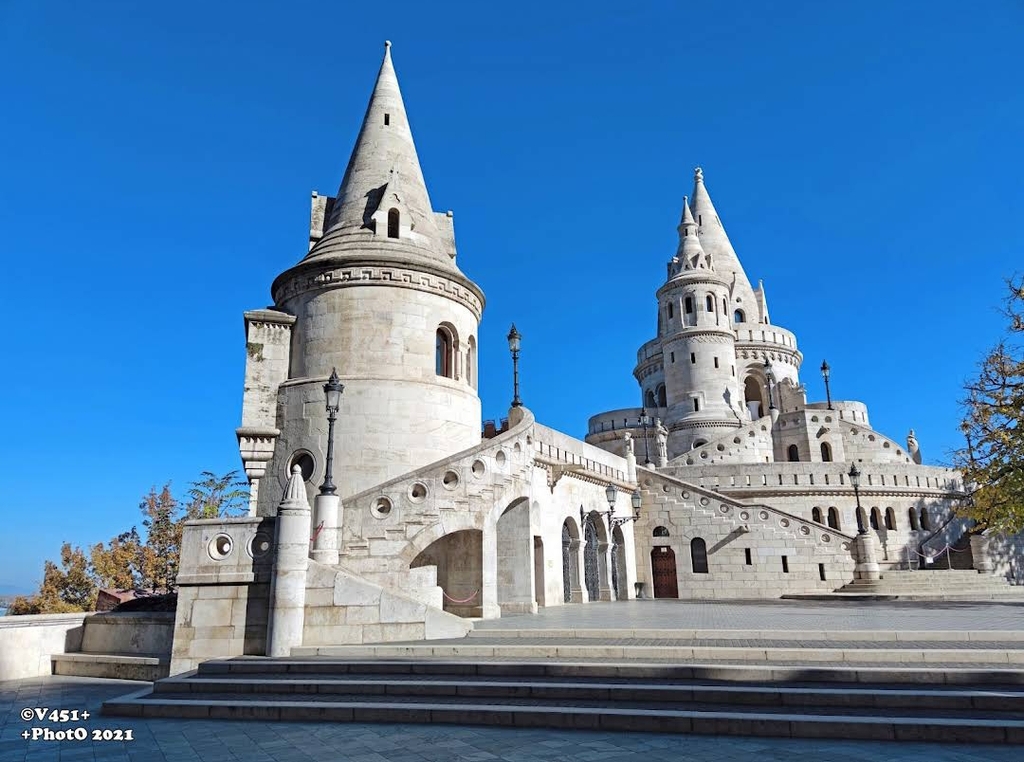
Fisherman's Bastion (Source: Google Maps)
Fisherman's Bastion is an iconic neo-Gothic terrace located on the Buda side of Budapest, offering breathtaking panoramic views of the city. Completed in 1902, it was designed by architect Frigyes Schulek and is named after the medieval fishermen who defended this part of the city walls. The bastion features seven towers, symbolizing the seven Magyar tribes that settled in the Carpathian Basin. Its fairy-tale architecture, with intricate stone carvings and turrets, makes it one of Budapest's most photographed landmarks. Visitors can enjoy stunning vistas of the Danube River, the Parliament building, and the Pest side of the city from its terraces. Fisherman's Bastion is not only a popular tourist destination but also a significant historical site, representing Hungary's rich medieval past and its cultural identity.

Your travels, your rules.
Create your own Free Walking Tours.
Set your preferences, distances and anything you want to do or see.
Completely free, no payment required.